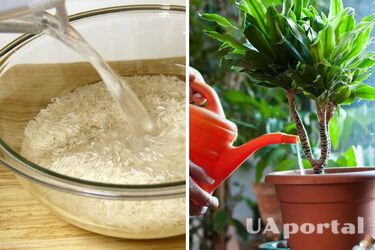Do not pour out the water after washing the grains: How to fertilize indoor plants

Flower growing is a great hobby for those who spend a lot of time at home. But in order for plants to look attractive, it is important to create favorable conditions for them and take care of them correctly. If you already know why cyclamen can die and how to propagate focus at home, then here is another useful life hack from experienced flower growers: do not pour out the water after washing the croup, as it can be used as fertilizer for your indoor plants. Instead, use it to water your flowers.
Read also: How often to water tulips so that they bloom longer
Many housewives know that before preparing a side dish, you need to wash the groats. Some wash only rice to remove excess starch and get a crumbly porridge, while others do it with different grains, such as buckwheat, millet, bulgur, oatmeal, or couscous.
Of course, most housewives pour out the water that remains after washing the croup, but this is not recommended if you have indoor plants. The reason is that this water contains beneficial substances such as silicon, phosphorus, magnesium, and iron, which can serve as an excellent fertilizer for flowers.
How can you use water from under groats for watering plants? If you have just transplanted the plant into new soil, it is worth watering it with the water left after washing the groats after 2 months. Usually, the new soil contains enough of all the necessary substances for the plant, but the use of water from under the groats can be an additional source of macro- and microelements necessary for plant health.
To do this, after washing the grains, save the water in a separate container, for example, in a bottle or kitchen pan. Let it settle for a few hours to settle all the harmful substances contained in the cereal. Then you can use this water to water indoor plants.
In order not to harm the plants, it is recommended to dilute the water from under the grains in a ratio of 1:3 or 1:4, that is, for 1 part of the water from under the grains, add 3-4 parts of plain water, for example, boiled or settled water. This will help to avoid excessive concentrations of macro- and microelements in the soil, which can be harmful to plants.
We will remind you that specialists talked about 5 basic rules for transplanting indoor plants in the spring.
If you want to receive the latest news about the war and events in Ukraine, subscribe to our Telegram channel!
